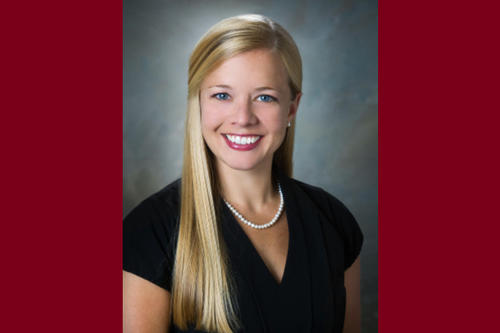
September is National Ovarian Cancer Awareness Month. The American Cancer Society estimates there will be about 360 new cases of ovarian cancer in Minnesota in 2019.
Britt Erickson with the University of Minnesota answers questions on the symptoms, treatment and screening for ovarian cancer.
Q: What is ovarian cancer?
Dr. Erickson: Ovarian cancer is a disease process that originates from either the surface of the ovary, fallopian tube or the lining of the abdominal cavity. Cells become abnormal and then multiply, forming tumors that ultimately spread to other parts of the abdomen. Unfortunately, there is no screening test for ovarian cancer. It is not usually discovered through pelvic exam or Pap smear, which is why most women with ovarian cancer have more advanced (stage 3 or 4) disease.
Q: Which women are more at risk for ovarian cancer?
Dr. Erickson: The lifetime risk for developing ovarian cancer for women is 1 in 60. However, certain groups of women are at higher risk of developing ovarian cancer, such as those with a strong family history of ovarian cancer or with a genetic mutation in their DNA that predisposes them to develop ovarian cancer (such as a BRCA mutation).
Q: What are the symptoms of ovarian cancer and how is it detected?
Dr. Erickson: Most women do not have symptoms of ovarian cancer until the cancer has spread to other parts of the abdomen. Symptoms include bloating, abdominal distention and feeling full. Some women have other gastrointestinal symptoms such as diarrhea and constipation. Pain is uncommon with ovarian cancer. Ovarian cancer is then detected by imaging (either ultrasound, CT scan or MRI) and confirmed with a biopsy or surgery.
Q: What are the treatment options for ovarian cancer?
Dr. Erickson: The best treatment is prevention! Unfortunately, there are currently no screening tests for ovarian cancer, although we are working hard to develop one at the University of Minnesota. For women with a known genetic mutation that puts them at risk for ovarian cancer, prophylactic surgery — removing the tubes and ovaries — is recommended and should be discussed with their doctor. Once diagnosed with ovarian cancer, most patients receive a combination of chemotherapy and surgery. The goal of treatment is for women to go into remission, which means they are cancer-free. This happens over 50% of the time. However, ovarian cancer recurrence rates are high and so many women ultimately die from this cancer.
Q: What are you doing to advance ovarian cancer research?
Dr. Erickson: At the University of Minnesota, we are studying many aspects of ovarian cancer development, diagnosis, treatment and long term care. We have many clinical trials open for women at various stages of their cancer treatment. The goal of these trials is to determine if new therapies are better than existing treatments. For example, we have a trial open examining the effects of immunotherapy, specifically Natural Killer cells, in women with recurrent ovarian cancer.
Together with our basic scientist researchers, we are using blood samples and Pap smears to evaluate for proteins that may be more common in women with ovarian cancer with the hope of one day developing a screening test. Also, we are evaluating various survivorship programs to ensure that women who are cancer free are able to have good physical and emotional support even after their treatment is over.
Finally, we are training medical students, residents and gynecologic oncology fellows to learn more about how to take care of women with ovarian cancer. Educating the next generation of physicians to ensure they know how to best diagnose and care for ovarian cancer patients is also an important part of our job.
Dr. Britt Erickson is an assistant professor in the University of Minnesota Medical School on the Twin Cities campus, a Masonic Cancer Center member, and a gynecologic oncologist at M Health Fairview. Her areas of expertise include ovarian, uterine and cervical cancer. In addition to taking care of patients, she is a researcher and an instructor and advisor at the Medical School.
- 30 -
About “Talking...with U of M”
“Talking...with U of M” is a resource whereby University of Minnesota faculty answer questions on current and other topics of general interest. Feel free to republish this content. If would like to schedule an interview with the faculty member or have topics you’d like the University of Minnesota to explore for future “Talking...with U of M,” please contact University Public Relations at [email protected].
- Categories:
- Health




